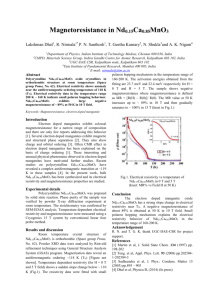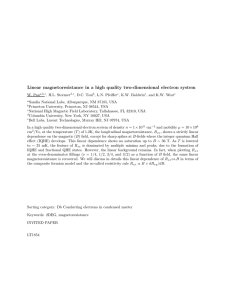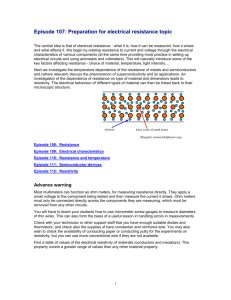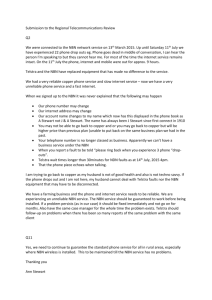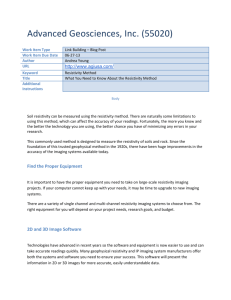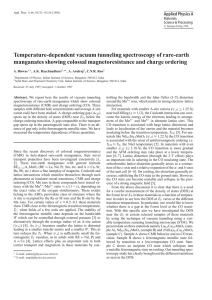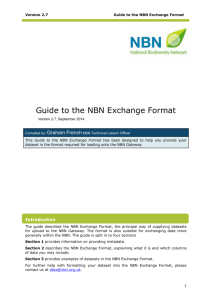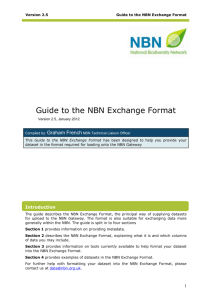View
advertisement
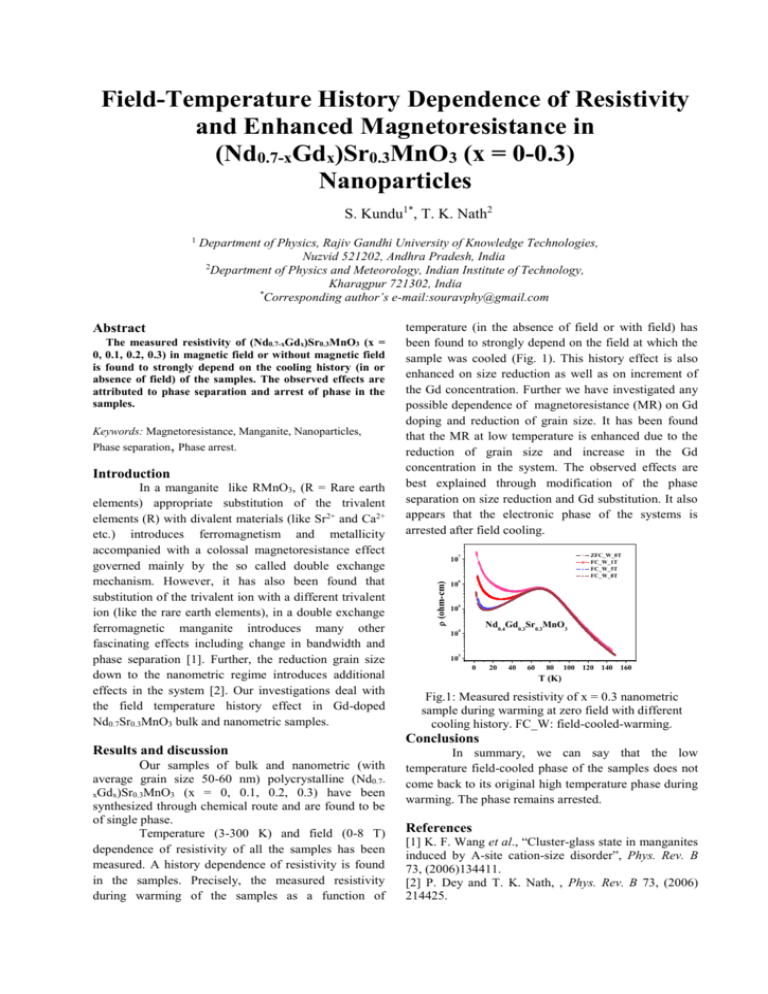
Field-Temperature History Dependence of Resistivity and Enhanced Magnetoresistance in (Nd0.7-xGdx)Sr0.3MnO3 (x = 0-0.3) Nanoparticles S. Kundu1*, T. K. Nath2 Department of Physics, Rajiv Gandhi University of Knowledge Technologies, Nuzvid 521202, Andhra Pradesh, India 2 Department of Physics and Meteorology, Indian Institute of Technology, Kharagpur 721302, India * Corresponding author’s e-mail:souravphy@gmail.com Abstract The measured resistivity of (Nd0.7-xGdx)Sr0.3MnO3 (x = 0, 0.1, 0.2, 0.3) in magnetic field or without magnetic field is found to strongly depend on the cooling history (in or absence of field) of the samples. The observed effects are attributed to phase separation and arrest of phase in the samples. Keywords: Magnetoresistance, Manganite, Nanoparticles, Phase separation, Phase arrest. Introduction In a manganite like RMnO3, (R = Rare earth elements) appropriate substitution of the trivalent elements (R) with divalent materials (like Sr2+ and Ca2+ etc.) introduces ferromagnetism and metallicity accompanied with a colossal magnetoresistance effect governed mainly by the so called double exchange mechanism. However, it has also been found that substitution of the trivalent ion with a different trivalent ion (like the rare earth elements), in a double exchange ferromagnetic manganite introduces many other fascinating effects including change in bandwidth and phase separation [1]. Further, the reduction grain size down to the nanometric regime introduces additional effects in the system [2]. Our investigations deal with the field temperature history effect in Gd-doped Nd0.7Sr0.3MnO3 bulk and nanometric samples. Results and discussion Our samples of bulk and nanometric (with average grain size 50-60 nm) polycrystalline (Nd0.7xGdx)Sr0.3MnO3 (x = 0, 0.1, 0.2, 0.3) have been synthesized through chemical route and are found to be of single phase. Temperature (3-300 K) and field (0-8 T) dependence of resistivity of all the samples has been measured. A history dependence of resistivity is found in the samples. Precisely, the measured resistivity during warming of the samples as a function of temperature (in the absence of field or with field) has been found to strongly depend on the field at which the sample was cooled (Fig. 1). This history effect is also enhanced on size reduction as well as on increment of the Gd concentration. Further we have investigated any possible dependence of magnetoresistance (MR) on Gd doping and reduction of grain size. It has been found that the MR at low temperature is enhanced due to the reduction of grain size and increase in the Gd concentration in the system. The observed effects are best explained through modification of the phase separation on size reduction and Gd substitution. It also appears that the electronic phase of the systems is arrested after field cooling. ZFC_W_0T FC_W_1T FC_W_5T FC_W_8T 7 10 (ohm-cm) 1 6 10 5 10 Nd0.4Gd0.3Sr0.3MnO3 4 10 3 10 0 20 40 60 80 100 120 140 160 T (K) Fig.1: Measured resistivity of x = 0.3 nanometric sample during warming at zero field with different cooling history. FC_W: field-cooled-warming. Conclusions In summary, we can say that the low temperature field-cooled phase of the samples does not come back to its original high temperature phase during warming. The phase remains arrested. References [1] K. F. Wang et al., “Cluster-glass state in manganites induced by A-site cation-size disorder”, Phys. Rev. B 73, (2006)134411. [2] P. Dey and T. K. Nath, , Phys. Rev. B 73, (2006) 214425.
